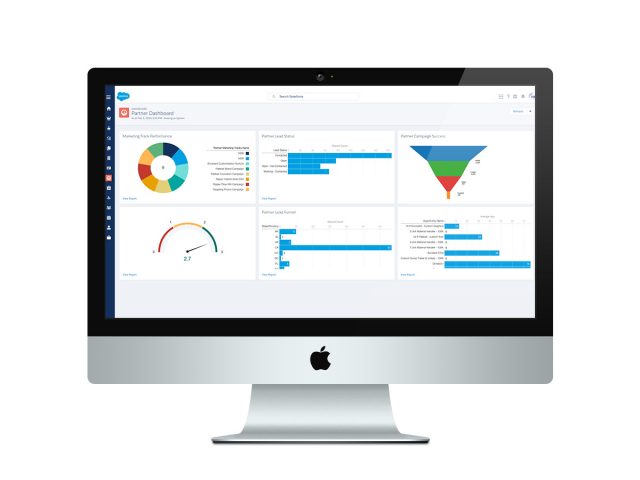Could you grow your partner network with better program management? Keep reading.
With our partnerDRIVEN blog series, you’ll learn about the latest trends and best practices to drive loyalty and performance. In part 1, we talked about three ways to increase partner engagement: collaboration, accessibility and partner experience. In part 2, let’s tackle the four biggest challenges for indirect sales channels.
Because when you handle them right? You’ll have easier onboarding. Greater partner loyalty. And, ultimately, higher sales.
4 Top Challenges & Opportunities
1. Partner Onboarding
You need partners to sell your products. But indirect sales channels are complex. How do you communicate to companies that they should be your partners? How do you effectively find out what you need to know about potential partners – how long they’ve been in business, what their finances look like, what other
products they distribute? Do they know how to request information about what you provide your partners, like market development funds (MDF), training and your captive lead management process?
Best Practices
When you’re working with potential partners …
- Be clear. Streamline the onboarding process by providing complete and current information about your program benefits and your expectations.
- Be accessible. Make it easy for potential partners to talk and collaborate with you.
- Be quick to respond to any questions.
You can provide a great partner experience by automating many of the manual processes of partner onboarding. Keep in mind that the number one predictor of partner loyalty is ease of doing business with you. Start the relationship off on the right note by making onboarding easy.
2. Partner Management & Classification
It’s critical to understand your sales forecast for the next quarter and beyond. That means you need a way to work with your partners to set goals that accurately project partner forecasts.
Many B2B companies try to simplify their program management by organizing their partners into tiers. But that can be difficult to do with manual processes and spreadsheets. Plus, partners don’t always have access to information they need, such as the requirements and benefits of their partner tier.
Best Practices
The goal of partner classification is to organize your partner network based on a defined set of criteria to make it simple for your company – and clear to your partner network.
- Improved Alignment: Organize your partner program based on what drives your business. Doing so will help align your teams and partners to focus on what matters – service to your customer.
- Tiered Benefits: Many companies tier their partner network based on performance, product lines, industries, market share and geographies. When you organize your partners into tiers based on these types of criteria, you can then align the benefits you provide partners in a fair and meaningful way. For example, based on tiers, partners have different level of discounts and rebates, increased support and training, and access to additional market development funds (MDF) and marketing support.
Partner classification improves clarity for you and your partners, making your relationships easier to manage and potentially more profitable.
3. Contract Management
Your partners are writing contracts with your customers. How are they storing those contracts? Are they using the most up-to-date and accurate versions? Can you see the contracts after they’re signed?
Best Practices
Make contract management easier for your business and your partners through:
- More Automation: Automate the availability of current contracts, warranties, aftermarket program documents and more. Your partners shouldn’t have any questions about which contracts they should be using.
- More Accessibility: Because your partners are always on the go, make your contracts accessible on mobile devices.
4. Reporting
You need to know what’s happening in your indirect sales channels. When you have a lot of partners, you need to see what geography they cover, their products, their industries and their market share. Your partners want access to leads, opportunities, product forecasts and training resources.
Best Practices
Provide your partners with the data they need to drive sales.
- Streamlined Dashboard: Offer your partners a dashboard that brings together their leads, MDF and marketing programs.
- Real-Time Reports: Give your partners real-time access to market share reports and their product forecasts and sales data.
Get Results
Program management is essential to your business. Think about ways to simplify the way you classify and manage your partners, from onboarding to reporting. Because here’s a simple truth: when you make it easier for your partners to do business with you, you’ll do more business.
Need a better program management solution? partnerDRIVEN makes onboarding easy. It automates information collection from potential partners and the distribution of your program information. Plus, you can classify your partners into tiers, manage partner contracts and run reports on sales data, market share and more.
Are these the challenges you’re seeing in your business or industry? Connect with me on LinkedIn if you’d like to learn more about how partnerDRIVEN can work for you or discuss ways to improve your program management.
P.S. Stay tuned for our next post about partner scorecards coming soon, and see how to manage your partner network from a single dashboard.


